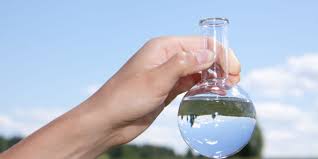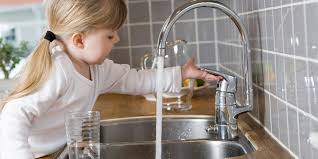The Benefits of Water Quality Testing
No matter if you have well water or public water, you worry about the quality of the water that comes from your home’s tap. It’s entirely understandable considering how many places are facing problems with their water. Stop being concerned about your water quality and employ water test labs to help you in determining if there’s anything to be concerned about with your water. Several benefits come from having your water tested through water test laboratories.
Peace of Mind
The first benefit is that it offers peace of mind. You’ll know for sure if there’s anything wrong with your water and its quality without a doubt. Then, you can either relax or address the issue that was found with the test.
Hard to Find Contaminants
Having your water tested privately will cover a wide range of contaminants in your water. Every water treatment plant has different standards and tests that they run. By having your water tested yourself, you’ll know that a comprehensive analysis has been done on your water’s quality.
Insights into Health Concerns
Contaminants in the water could be behind health concerns that you have. For instance, you may have problems with your skin, such as dryness, itchiness, or even rashes. You may have issues with your scalp, or your hair always feels dirty. It’s easy to assume that it’s from the weather, not drinking enough water, or just the way your body is. But, it could be from the water that you’re showering with during your daily routine. Hard water can be an underlying cause of your skin condition, and knowing this can help you address that root problem. Hard water doesn’t thoroughly rinse you off during a shower as soft water will.

What are the Effects of Waterborne Contaminants on Health
The EPA has a list of more than 80 contaminants that can effect your water quality which can pose a risk to your. The contaminants fall into two categories according to the health effects that they cause.
Acute Effects
Acute effects occur within hours or days of the time that a person consumes a contaminant. People can suffer acute health effects from almost any contaminant if they are exposed to extraordinarily high levels (as in the case of a spill). In water, microbes, such as bacteria and viruses, are the contaminants with the greatest chance of reaching levels high enough to cause acute health effects.
Most people’s bodies can fight off these microbial contaminants the way they fight off germs, and these acute contaminants typically don’t have permanent effects. Nonetheless, when high enough levels occur, they can make people ill, and can be dangerous or deadly for a person whose immune system is already weakened.
Chronic Effects
Chronic effects occur after people consume a contaminant at levels over EPA’s safety standards over the course of many years. The water contaminants that can have chronic effects include chemicals (such as disinfection byproducts, solvents and pesticides), radionuclides (such as radium), and minerals (such as arsenic). Examples of these chronic effects include cancer, liver or kidney problems, or reproductive difficulties

Basics.
Getting enough water every day is important for your health. Healthy people meet their fluid needs by drinking when thirsty and drinking with meals. Most of your fluid needs are met through the water and beverages you drink. However, you can get some fluids through the foods that you eat. For example, broth soups and foods with high water content such as celery, tomatoes, or melons can contribute to fluid intake.
Water helps your body:
- Keep your temperature normal
- Lubricate and cushion joints
- Protect your spinal cord and other sensitive tissues
- Get rid of wastes through urination, perspiration, and bowel movements
Your body needs more water when you are:
- In hot climates
- More physically active
- Running a fever
- Having diarrhea or vomiting

How do contaminants (germs and chemicals) get into my drinking water?
There can be many sources of contamination of our water systems. Here is a list of the most common sources of contaminants:
- Naturally occurring chemicals and minerals (for example, arsenic, radon, uranium)
- Local land use practices (fertilizers, pesticides, livestock, concentrated animal feeding operations)
- Manufacturing processes
- Sewer overflows
- Malfunctioning wastewater treatment systems (for example, nearby septic systems)
Many contaminants that pose known human health risks are regulated by the United States Environmental Protection Agency (EPA). EPA makes sure that water meets certain standards, so you can be sure that high levels of contaminants are not in your water.
Signs of contaminated water
It is important for the EHP, or whoever is in charge of the water supply within the community, to constantly monitor the quality of the water.
One sign that the water supply might be contaminated is when several people from different families in the community become sick at the same time. A contaminated community water supply can make lots of people sick at the same time. Remember, however, such sickness may also be caused by contaminated food or vectors carrying disease-causing germs.
It is, therefore, a good idea to occasionally check the complete water supply system for any problems. If any are found they must be fixed. It might be necessary to call the water supplier for help in locating and fixing the problem. Where contamination by germs is suspected, sampling of the entire water supply system is recommended to find the contamination source. This is done by working through the water supply system and sampling at different places.
The results of these samples will show which parts of the system are contaminated and where the contamination may be happening.
It is important that every water tank is inspected regularly for signs of water contamination. These are signs that the water in the tank is contaminated:
- The water is a green or brown in colour
- Green slime is growing on the sides or bottom of the tank
- Faeces, rotting leaves or dead animals are in the water
- Live animals, such as frogs, are in the water
- There is no lid on the tank
- The lid of the tank is not on tightly or is rusty and has holes in it